- Home
- Louis L'Amour
Sacketts 00 - The Sackett Companion (v5.0) Page 6
Sacketts 00 - The Sackett Companion (v5.0) Read online
Page 6
DIANA MACKLIN: Daughter of Robert Macklin; a quiet, self-contained girl of considerable intellect. She sewed well, spun well, and performed all domestic activities with assurance and finesse, but she also read much, and had ideas. These last were considered a very doubtful quality by many of the men of the colony. Several of the young men offered themselves as suitors but Diana manifested no interest. These suitors included Joseph Pittingel, an older man known to be well-off, one of the leaders in the community.
She knew much of herbs and their medicinal values and often went into the woods to collect herbs. Because of this and because she was not afraid of the night she was suspected of witchcraft. Pittingel, it seems, was the first to hint at such a thing. Anna Penney scoffed at this but her husband was uneasy. He was a respecter of authority and unwilling to voice opinions contrary to those of the men in power. Anna Penney, for one, recalled that no such suspicions were voiced by Pittingel until after his suit had been refused. Tom Penney liked Diana but was uneasy in the presence of a girl not afraid to speak her mind.
TOM PENNEY: A hard-working man trained as a stonemason, but skilled with tools and any kind of construction. He also has done quite well as a farmer.
Here it might be added that few of the Puritans had previous experience as farmers. A large number had been craftsmen or artisans of some kind and only a few had experience with planting, cultivating, or harvesting crops.
Another factor not always considered when reviewing the hard times the early colonists had was that they had little or no experience as hunters. In England the game belonged to the King or to the great lords, and their gamekeepers kept careful lookout for poachers.
The would-be colonists landed in a country with much game but no experience at hunting or dressing captured game. This they had to learn from the Indians, who were astonished by the white man’s ignorance of something so basic.
ANNA PENNEY: Wife to Tom, mother to Temperance and Carrie, and friend to Diana, but like her husband inclined to be subservient to authority. It was only her great love for her lost child that led her to send a friendly Indian in search of Yance Sackett, who was a woodsman. Within herself she was doubtful of Pittingel’s wisdom, although not suspicious of his motives. In any event, nothing more was being done and her feelings demanded the search be pursued.
JOSEPH PITTINGEL: A wealthy merchant and owner of ships; a trader with interests in the West Indies. A highly respected man and one of the officials of the community, which was unaware that he was also a slave trader, and a ruthless man to whom money and position were all-important. Contemptuous of his fellow settlers, whom he considered lesser men, he hated all who opposed or contradicted him. Success had hardened his resolves and made him even more sure of himself.
ROBERT MACKLIN: Father of Diana; a good man, a sincere man, but not one to throw his weight about unless necessary. A strong man in his own way and quite well-off, he knew nothing of Indians or their ways, nor did he know the forest. Although he distrusted Pittingel he had nothing upon which to base his distrust. A studious man, happiest when with his books, he came to the new country with some knowledge of farming as well as a small, steady income from the old country. Yet he had his own fears and worries, and had come to America to escape the scandal surrounding his wife, Diana’s mother.
MAX BAUER: A slave trader; a ruthless, brutal man of great ability in his own way. Although second to Pittingel he was a stronger man in every way. A skilled tracker and hunter, a good seaman, he was all Pittingel was, only more so, but without the money. A man to be feared.
HENRY: A slave of Ashanti background. His people have always been warriors and slave traders in Africa, raiding other tribes and selling them as slaves to the Arab, Portuguese, and other traders who operated off the African coast. Enslaved himself, he had been quietly submissive, making himself useful while biding his time. He helped the girls to escape and escaped with them. His hope was, by helping them, to find a place for himself among their people. This was, at least, the story he gave himself. He was actually a kindly man, respectful of them, and aware of the life awaiting them for which they were in no way equipped to survive. A cool, self-contained man of considerable ability, and a great man in his own land where his father was a king among the Ashanti, a warrior people.
VERN, FEEBRO, AND LASHAN: Henchmen of Bauer, and hence, to some extent, of Pittingel.
JUBLAIN: Former soldier, adventurer, a friend and associate of the Sacketts. Gone to Moslem lands to seek his fortune.
PETER TALLIS: Also in SACKETT’S LAND, and TO THE FAR BLUE MOUNTAINS. Had a booth in St. Paul’s Walk, a man of many parts and varied interests. Originally a man skilled in cutting not quite legal corners, he had become the agent for the Sacketts and the produce they sent for sale in England or the Low Countries. He handled such business for others as well, led into the field by the Sacketts.
DAMARISCOVE: In the Maine Islands, but rarely mentioned among the early settlements in America. Vessels had been coming to this island for generations. The first authentic date so far is 1603, four years before the Jamestown settlement and seventeen years before the Pilgrims landed. The Mayflower, as a fishing vessel, had visited Damariscove before its famous voyage with the Pilgrims. No longer inhabited, it was a port of call for many ships along the Atlantic coast prior to British settlement on the mainland.
SHAWMUT: Where Boston now stands. First settled by Samuel Maverick and the Reverend Blaxton. There were several springs on the site. Winthrop moved most of his colony there after the original site proved unhealthy.
SAMUEL MAVERICK: He had come over the Atlantic with Gorges, who established a colony in Maine. Maverick retained property in Maine but settled at Shawmut and built a strongly fortified trading station there. An able, interested man, he owned several trading vessels and later wrote a book called A Brief Description of New England And Several Towns Therein.
He was an ancestor to the Maverick for whom the unbranded Texas cattle were named, and of Maury Maverick, a Congressman from Texas in the New Deal Era.
THE REVEREND WILLIAM BLACKSTONE, OR BLAXTON: Born in Salisbury, England in 1595. Graduated from Cambridge. Came to America in 1623. As he had religious differences with the colonists he eventually left Boston for Rhode Island. He has been credited with planting the first orchards in Massachusetts. Reputed to be a reserved and studious man content to be left alone to pursue his own interests, both intellectual and agricultural.
PORT ROYAL, JAMAICA: Variously called the City of Gold and the Babylon of the West, Port Royal was a buccaneers’ port. There was much legitimate trade, of course, but it was predominantly a port for pirates, privateers, slave traders, and those who dealt with them. Bronzed seamen with gold rings in their ears swaggered along the quays and lingered in the waterfront dives, of which there were a-plenty. The loot from many a sunken or captured ship was brought to Port Royal and it was there the riffraff of the seas spent their bloodstained gold. Brawls and dagger thrusts were an everyday matter and a man was supposed to take care of himself. Most of them were well-fitted to do so.
Dining, drinking, and wenching, the buccaneers spent fortunes because there was no need to save. The seas were a rich hunting ground for the men of the Black Flag. This continued until one sweltering morning in June, 1692, when an earthquake struck. Three rapid shocks, close together, and in three minutes or less Port Royal was destroyed as efficiently as Sodom and Gomorrah. The city slid off to the bottom of the sea, taking most of its population along with it. One moment the wild, roistering town was booming at its best and in the next there was nothing but a turmoil in the water, floating wreckage, and here and there a body the earth did not swallow.
It was to this port, still in its heyday, that Kin-Ring came on his quest for the slave traders.
THE MAROONS: Escaped slaves who took refuge in the Cockpit country of Jamaica. There were Maroons elsewhere but those in Jamaica were the best known and won themselves a position unequaled by any others.
From th
e Cockpit country they fiercely resisted all efforts to recapture them and finally won independent status. It is likely that many of them were of Ashanti blood. One detachment that was captured was shipped off to Nova Scotia and later to Sierra Leone, where they fell back into their old way of life. Most of those remaining in Jamaica are now Seventh-Day Adventists.
Their capital is at Accompong, and but few trails lead into the Cockpit country, so-called because of a series of pits or inverted cones in the rock. The pits are from one hundred to five hundred feet in depth, in diameter from ten to one hundred yards, many of them overgrown with brush and trees. From this hideout of more than two hundred square miles they fought the Spanish, from whom they escaped, and later the British, until a treaty was negotiated that left the Maroons in a very favorable position.
AUGUSTUS JAYNE: A tailor in Port Royal, but he was much else besides. A man known to Peter Tallis, with whom he had dealings. A man with an ear to the ground and aware of all that was happening around him, as well as elsewhere.
RAFE BOGARDUS: A fine swordsman and a professional killer in a town where every man had done his share of killing and was prepared to do more. Kin defeated but did not kill him, so no doubt he will appear again in his own good time.
CLAIBORNE: An historical character who had a trading station on Kent Island in Chesapeake Bay.
ADELE LEGARE: A feisty young lady of unusual intelligence who matured very quickly when necessity demanded; who adapted herself to the situations in which she found herself and became a person of quality and decision. Kidnapped and sold as a slave, she did not despair, nor did she forget those responsible. From the crowd at the slave auction she selected a quiet young man and lured him into buying her, then persuaded him that she’d make a better wife than a slave. She not only became his wife, and one of whom he could be proud, but she assisted him in his business affairs. Most important, she did not forget the men who had kidnapped her.
LEGARE: The planter who became Adele’s husband; a plantation owner and dabbler in government affairs who found in Adele the woman he needed, and who needed him. Kin suggested his brother Brian as London agent for Legare.
DEAL WEBSTER: A trader on Kent Island.
CAPE ANN: A granite peninsula into the Atlantic now largely occupied by Gloucester and Rockport. A place familiar to seafaring men from the first days of sail along the Atlantic coast.
GALLEON BAY: Located on the northeastern side of Goat Island, a shallow but excellent shelter for small craft; not far from Port Royal and Kingston, Jamaica.
Jamaica was for many years the most important of the West Indian Islands to the colonists, and one of the many causes leading to the Revolutionary War was the restriction put upon direct trade to and from that island. England insisted that all trade with the West Indies be routed through English ports. Traders found it much easier to sail directly from the West Indies to North American ports and so avoid two crossings of the stormy Atlantic.
Rum, the most popular drink in early America, came from the West Indies and most of it from Jamaica. The trade with the American colonies was extremely profitable, while the two crossings of the Atlantic that England demanded removed a large portion of the profit.
THE WARRIOR’S PATH: An old war trail that led from the vicinity of Chattanooga to Boston, with many branches and offshoots. A trail long used by warring Indians on their raids, north and south, but particularly the Seneca war parties attacking the Catawba and the Cherokee. It had been in use for several hundred years before the coming of the white man.
JUBAL SACKETT
First publication: Bantam Books Hardcover, June 1985; Bantam Books paperback, June 1986
Narrator: Jubal Sackett
Time Period: c. 1620s
In which Jubal Sackett seeks out a way to the Shining Mountains, beyond the Great River, and beyond the wide grass plains, a place where someday other Sacketts may need to go, seeking a further refuge from the King and their enemies.
He parted from his father, each knowing they would not meet again, yet each knowing they must follow the path of destiny. And Jubal had always known his way led to the unknown lands far to the West.
And in which he finds a companion, also a seeker of unknown lands, and then a girl of the Natchez, a beautiful Indian girl but with ways and customs different than any Indian he had known.
Down the Mississippi he went, and up the Arkansas, following that river until it emerged from the Rocky Mountains, and then westward into the mountains until he found the place where he wished to put down roots and remain.
Itchakomi had been sent to the West by the Ni’kwana, seeking, she supposed, a new home for the Natchez. Yet had their wise man intended more than that? Had he seen in Jubal Sackett the man for her?
How did a woman attract a man? Who could she speak to of love? She was a Sun, perhaps even destined to be the Great Sun, or to hold the leadership until he came of age or another was chosen, and a Sun did not share thoughts with women of lower caste.
JUBAL SACKETT: A son of Barnabas, gifted as was his father with second sight, a loner and a wanderer by nature. A man of the woods and wilderness, silent when among others of his kind, skilled as any Indian with spear or bow, yet his reliance was upon the twin pistols made long ago by a superb Italian craftsman, and made by that man to demonstrate his skill to a great lord.
To Jubal Sackett, there was always another river to cross, another bend in the road, another hill to see beyond. His destiny was to be the first man west, yet was he? Had others gone before? Was there ever a first? There must have been, yet wherever he went there were signs that others had been before him.
KEOKOTAH: A Kickapoo; one of a nation of warriors and wanderers, known for their long, solitary treks into unknown lands. He found in Jubal, the son of Barnabas, a man to walk beside—a white man, but one of his own kind.
ITCHAKOMI ISHAIA: A daughter of the Great Sun, political and spiritual leader of the Natchez Indians of Louisiana and Mississippi. She was herself a Sun and a person of considerable importance in her village and tribe. She had been directed by the Great Sun to lead a small party west and locate a new place for them to move, as their wise men had foretold an end to the tribe if they remained where they now were.
KAPATA: Half Karankawa, who were cannibal Indians, he wished to wed Itchakomi, and aspired to leadership of the Natchez. He was a strong warrior, fiercely determined, and by marrying Itchakomi, a Sun, he would be in a position to maneuver for leadership. He immediately sensed a rival in Jubal, and intended to kill him.
NI’KWANA: The Master of Mysteries of the Natchez, a Medicine Man but more than that, for he was one of a mysterious people who merged with the Natchez in the distant past. A maker of magic, a man of wisdom and kindness.
THE COMANCHE OR KOMANTSI: A fierce and warlike tribe of horse-riding Indians who came down from the north destroying all in sight. During the course of a few years they wiped out most of the Plains Apache. At the time of this story they were just beginning to acquire horses by stealing them from the Spanish, but they and their associates, the Kiowa, were to become the finest horsemen of the plains. The Commanding General of the British forces, reviewing armies around the world, said they were the finest light cavalry he had ever seen.
For more than two hundred years they waged war with their relatives, the Utes, until finally they signed a formal Treaty of Peace at elaborate ceremonies to which I was an invited guest. It was the only formal treaty signing between two Indians tribes who had been at war. A Medicine Teepee was prepared and the elders of the tribes, after being purified by smoke from a cedar chip fire, wafted over them by an eagle’s wing in the hands of a Medicine Man, entered the teepee for the formal signing. It was a most impressive ceremony at which I was honored to be present.
CONEJEROS: A branch of the Apache tribe, very active in eastern Colorado and neighboring areas, until finally destroyed by the Comanche.
GOMEZ: A renegade Spanish officer who tried to buy Itchakomi from Jubal; he h
ad broken with his own unit but was hurrying back to Santa Fe to turn in the first report, to get his story on record first. A tough, ruthless, and dangerous man. A man without scruples and without a conscience.
DIEGO: The officer against whom Gomez rebelled; a good man, a sincere man. He warned Jubal the Spanish would not permit him to trade there, yet when Jubal explained the Spanish might need an ally as well as a supply point, he listened and seemed receptive.
UNSTWITA: A Natchez who had found the leader he wished to follow in Jubal, and with Jubal, a Sun. The Indians had no such role as “princess,” yet had there been such a name, such a role, this Itchakomi Ishaia would have been.
We have much to learn about the American Indian, and unhappily many of the old men and women who knew the stories are gone. Such is often the case when there is no written language, for people are vulnerable and precious knowledge may be possessed by only one man, or at best a few.
A certain rite or ceremony, a dance, or a song, may have belonged to but one man. It may have been something he created as I would write a novel or someone would paint a picture. Perhaps that ceremony existed only in his own mind and he was the only one who could properly direct it, so if he dies the ritual dies with him. Others can often remember only fragments. But there is another thing: that song, that way, that dance belonged to the dead man, so it would not be used again. Feelings about such things vary from tribe to tribe.
Often the Indian does not wish to share those things sacred to him, and this I find easy to understand. The white man, not having the Indian background or early teaching or experience, can grasp only the superficial aspects of Indian culture. He may see the color and the movement without grasping any of the meaning it has for the Indian. Little as I know, I often listen to those who believe they know, and hear them expound at great length on what Indian lore is all about, and even to me it is apparent they have no idea of what they are talking about. The meaning has escaped them, as it well might escape anyone not an Indian. Some anthropologists have made mistakes in understanding as serious as those made by early missionaries.

 Novel 1987 - The Haunted Mesa (v5.0)
Novel 1987 - The Haunted Mesa (v5.0) The Haunted Mesa (Louis L'Amour's Lost Treasures)
The Haunted Mesa (Louis L'Amour's Lost Treasures) The Walking Drum (Louis L'Amour's Lost Treasures)
The Walking Drum (Louis L'Amour's Lost Treasures) Fallon (Louis L'Amour's Lost Treasures)
Fallon (Louis L'Amour's Lost Treasures)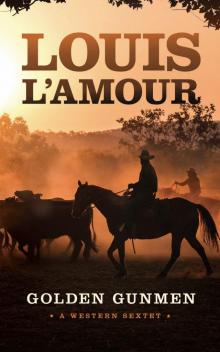 Golden Gunmen
Golden Gunmen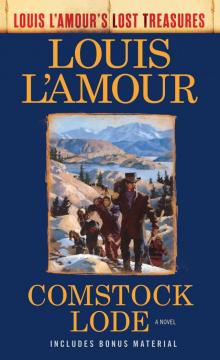 Comstock Lode
Comstock Lode The Lonesome Gods (Louis L'Amour's Lost Treasures)
The Lonesome Gods (Louis L'Amour's Lost Treasures) No Traveller Returns (Lost Treasures)
No Traveller Returns (Lost Treasures) Yondering: Stories
Yondering: Stories The Strong Land
The Strong Land Reilly's Luck (Louis L'Amour's Lost Treasures)
Reilly's Luck (Louis L'Amour's Lost Treasures) The Man Called Noon (Louis L'Amour's Lost Treasures)
The Man Called Noon (Louis L'Amour's Lost Treasures) Draw Straight
Draw Straight Last of the Breed (Louis L'Amour's Lost Treasures)
Last of the Breed (Louis L'Amour's Lost Treasures) Taggart (Louis L'Amour's Lost Treasures)
Taggart (Louis L'Amour's Lost Treasures) The Hopalong Cassidy Novels 4-Book Bundle
The Hopalong Cassidy Novels 4-Book Bundle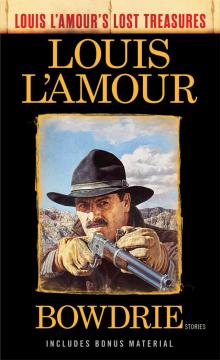 Bowdrie_Louis L'Amour's Lost Treasures
Bowdrie_Louis L'Amour's Lost Treasures Reilly's Luck
Reilly's Luck The Ferguson Rifle (Louis L'Amour's Lost Treasures)
The Ferguson Rifle (Louis L'Amour's Lost Treasures) Sacketts 00 - The Sackett Companion (v5.0)
Sacketts 00 - The Sackett Companion (v5.0) The Chick Bowdrie Short Stories Bundle
The Chick Bowdrie Short Stories Bundle Novel 1974 - The Californios (v5.0)
Novel 1974 - The Californios (v5.0)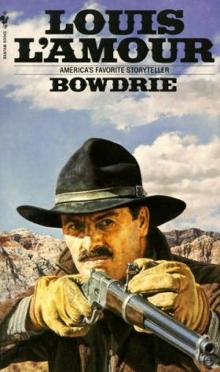 Collection 1983 - Bowdrie (v5.0)
Collection 1983 - Bowdrie (v5.0) Novel 1984 - The Walking Drum (v5.0)
Novel 1984 - The Walking Drum (v5.0) Over on the Dry Side
Over on the Dry Side The Walking Drum
The Walking Drum Novel 1963 - Catlow (v5.0)
Novel 1963 - Catlow (v5.0)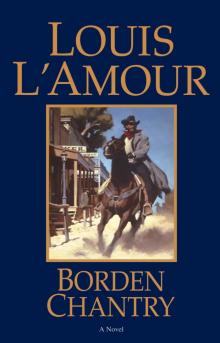 Borden Chantry
Borden Chantry Collection 1983 - Law Of The Desert Born (v5.0)
Collection 1983 - Law Of The Desert Born (v5.0) Ghost Towns
Ghost Towns Jubal Sackett (1985) s-4
Jubal Sackett (1985) s-4 Novel 1953 - Showdown At Yellow Butte
Novel 1953 - Showdown At Yellow Butte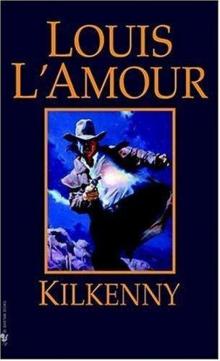 Kilkenny 03 - Kilkenny (v5.0)
Kilkenny 03 - Kilkenny (v5.0)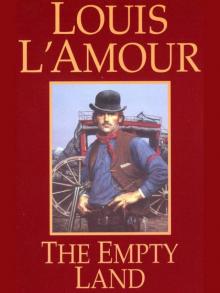 Novel 1969 - The Empty Land (v5.0)
Novel 1969 - The Empty Land (v5.0) Matagorda
Matagorda The First Fast Draw
The First Fast Draw Novel 1950 - Westward The Tide (v5.0)
Novel 1950 - Westward The Tide (v5.0) Ride the Dark Trail s-18
Ride the Dark Trail s-18 Novel 1963 - Fallon (v5.0)
Novel 1963 - Fallon (v5.0) Novel 1964 - Kiowa Trail (v5.0)
Novel 1964 - Kiowa Trail (v5.0) Kilkenny
Kilkenny Riders of the Dawn
Riders of the Dawn Sackett (1961) s-9
Sackett (1961) s-9 Fallon
Fallon Ride the River (1983) s-5
Ride the River (1983) s-5 Mojave Crossing s-11
Mojave Crossing s-11 Novel 1958 - Radigan (v5.0)
Novel 1958 - Radigan (v5.0) The Collected Short Stories of Louis L'Amour, Volume Five
The Collected Short Stories of Louis L'Amour, Volume Five Novel 1953 - Showdown At Yellow Butte (v5.0)
Novel 1953 - Showdown At Yellow Butte (v5.0) Collection 1980 - Yondering
Collection 1980 - Yondering Novel 1957 - Last Stand At Papago Wells (v5.0)
Novel 1957 - Last Stand At Papago Wells (v5.0) North To The Rails
North To The Rails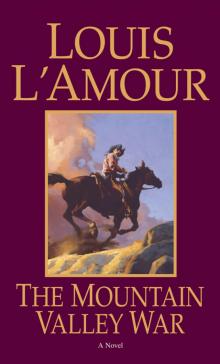 The Kilkenny Series Bundle
The Kilkenny Series Bundle Novel 1972 - Callaghen (v5.0)
Novel 1972 - Callaghen (v5.0) Novel 1970 - Reilly's Luck (v5.0)
Novel 1970 - Reilly's Luck (v5.0)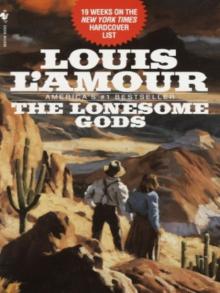 The Lonesome Gods
The Lonesome Gods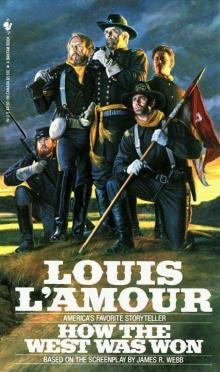 Novel 1963 - How The West Was Won (v5.0)
Novel 1963 - How The West Was Won (v5.0) Collection 2001 - May There Be A Road (v5.0)
Collection 2001 - May There Be A Road (v5.0) Flint
Flint Novel 1968 - Chancy (v5.0)
Novel 1968 - Chancy (v5.0) Volume 1: Unfinished Manuscripts, Mysterious Stories, and Lost Notes from One of the World's Most Popular Novelists
Volume 1: Unfinished Manuscripts, Mysterious Stories, and Lost Notes from One of the World's Most Popular Novelists Novel 1962 - High Lonesome (v5.0)
Novel 1962 - High Lonesome (v5.0) Fair Blows the Wind (Louis L'Amour's Lost Treasures)
Fair Blows the Wind (Louis L'Amour's Lost Treasures) Lando s-8
Lando s-8 The High Graders
The High Graders Collection 1986 - Night Over The Solomons (v5.0)
Collection 1986 - Night Over The Solomons (v5.0) The Collected Short Stories of Louis L'Amour, Volume 3
The Collected Short Stories of Louis L'Amour, Volume 3 Collection 1980 - Yondering (v5.0)
Collection 1980 - Yondering (v5.0) Showdown
Showdown The Quick And The Dead
The Quick And The Dead Novel 1968 - Down The Long Hills (v5.0)
Novel 1968 - Down The Long Hills (v5.0) The Lonely Men s-14
The Lonely Men s-14 Bowdrie (Louis L'Amour's Lost Treasures)
Bowdrie (Louis L'Amour's Lost Treasures) Treasure Mountain s-17
Treasure Mountain s-17 Novel 1959 - Taggart (V5.0)
Novel 1959 - Taggart (V5.0) The Collected Short Stories of Louis L'Amour, Volume 7
The Collected Short Stories of Louis L'Amour, Volume 7 Novel 1957 - The Tall Stranger (v5.0)
Novel 1957 - The Tall Stranger (v5.0) Novel 1978 - The Proving Trail (v5.0)
Novel 1978 - The Proving Trail (v5.0) Callaghen (Louis L'Amour's Lost Treasures)
Callaghen (Louis L'Amour's Lost Treasures) Sitka
Sitka Collection 1988 - Lonigan (v5.0)
Collection 1988 - Lonigan (v5.0) The Californios
The Californios Novel 1966 - The Broken Gun (v5.0)
Novel 1966 - The Broken Gun (v5.0)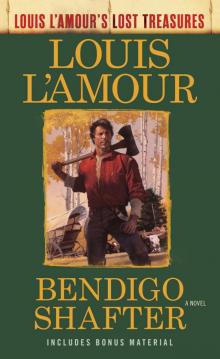 Bendigo Shafter (Louis L'Amour's Lost Treasures)
Bendigo Shafter (Louis L'Amour's Lost Treasures) Novel 1979 - The Iron Marshall (v5.0)
Novel 1979 - The Iron Marshall (v5.0)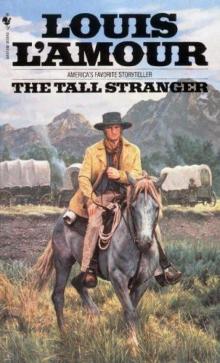 Novel 1957 - The Tall Stranger
Novel 1957 - The Tall Stranger Novel 1965 - The Key-Lock Man (v5.0)
Novel 1965 - The Key-Lock Man (v5.0) Collection 1986 - Dutchman's Flat (v5.0)
Collection 1986 - Dutchman's Flat (v5.0) Lonely On the Mountain s-19
Lonely On the Mountain s-19 Sackett's Land
Sackett's Land The Man Called Noon
The Man Called Noon Hondo (Louis L'Amour's Lost Treasures)
Hondo (Louis L'Amour's Lost Treasures) The Lawless West
The Lawless West The Warrior's Path (1980) s-3
The Warrior's Path (1980) s-3 Novel 1956 - Silver Canyon (v5.0)
Novel 1956 - Silver Canyon (v5.0) The Sky-Liners (1967) s-13
The Sky-Liners (1967) s-13 Mustang Man s-15
Mustang Man s-15 Novel 1971 - Tucker (v5.0)
Novel 1971 - Tucker (v5.0) Off the Mangrove Coast (Louis L'Amour's Lost Treasures)
Off the Mangrove Coast (Louis L'Amour's Lost Treasures) Collection 2005 - Riding For The Brand (v5.0)
Collection 2005 - Riding For The Brand (v5.0) Collection 1986 - The Trail To Crazy Man (v5.0)
Collection 1986 - The Trail To Crazy Man (v5.0) Silver Canyon
Silver Canyon The Man from Battle Flat
The Man from Battle Flat The Daybreakers (1960) s-6
The Daybreakers (1960) s-6 Kid Rodelo (Louis L'Amour's Lost Treasures)
Kid Rodelo (Louis L'Amour's Lost Treasures) Milo Talon
Milo Talon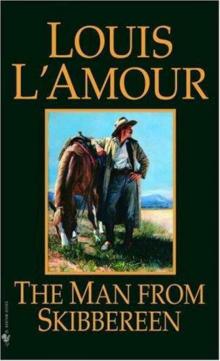 Novel 1973 - The Man From Skibbereen (v5.0)
Novel 1973 - The Man From Skibbereen (v5.0) Novel 1965 - The High Graders (v5.0)
Novel 1965 - The High Graders (v5.0) The Sacket Brand (1965) s-12
The Sacket Brand (1965) s-12 Rivers West
Rivers West Novel 1970 - The Man Called Noon (v5.0)
Novel 1970 - The Man Called Noon (v5.0) Education of a Wandering Man
Education of a Wandering Man The Collected Short Stories of Louis L'Amour, Volume 1
The Collected Short Stories of Louis L'Amour, Volume 1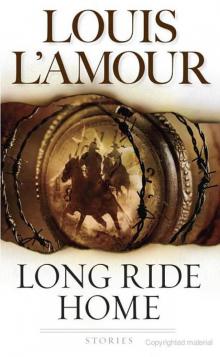 Collection 1989 - Long Ride Home (v5.0)
Collection 1989 - Long Ride Home (v5.0) Callaghen
Callaghen Collection 1999 - Beyond The Great Snow Mountains (v5.0)
Collection 1999 - Beyond The Great Snow Mountains (v5.0) West of the Tularosa
West of the Tularosa End Of the Drive (1997) s-7
End Of the Drive (1997) s-7 Novel 1986 - Last Of The Breed (v5.0)
Novel 1986 - Last Of The Breed (v5.0)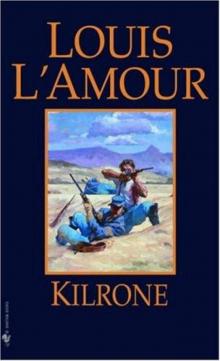 Novel 1966 - Kilrone (v5.0)
Novel 1966 - Kilrone (v5.0) Chancy
Chancy Desert Death-Song
Desert Death-Song Novel 1959 - The First Fast Draw (v5.0)
Novel 1959 - The First Fast Draw (v5.0) Kilkenny 02 - A Man Called Trent (v5.0)
Kilkenny 02 - A Man Called Trent (v5.0) Lost Trails
Lost Trails Novel 1972 - Callaghen
Novel 1972 - Callaghen Novel 1966 - Kid Rodelo (v5.0)
Novel 1966 - Kid Rodelo (v5.0) The Collected Short Stories of Louis L'Amour, Volume 2
The Collected Short Stories of Louis L'Amour, Volume 2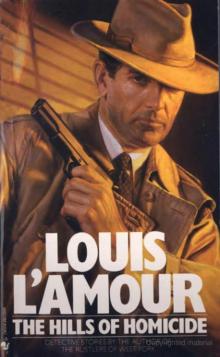 Collection 1983 - The Hills Of Homicide (v5.0)
Collection 1983 - The Hills Of Homicide (v5.0) Novel 1969 - Conagher (v5.0)
Novel 1969 - Conagher (v5.0) Radigan
Radigan High Lonesome
High Lonesome Bendigo Shafter
Bendigo Shafter Novel 1954 - Utah Blaine (As Jim Mayo) (v5.0)
Novel 1954 - Utah Blaine (As Jim Mayo) (v5.0) Collection 1990 - Grub Line Rider (v5.0)
Collection 1990 - Grub Line Rider (v5.0)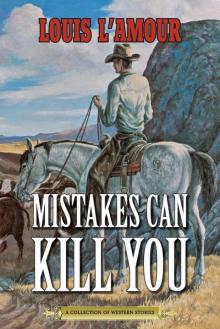 Mistakes Can Kill You
Mistakes Can Kill You The Iron Marshall
The Iron Marshall Novel 1963 - Dark Canyon (v5.0)
Novel 1963 - Dark Canyon (v5.0) Novel 1955 - Heller With A Gun (v5.0)
Novel 1955 - Heller With A Gun (v5.0) Novel 1978 - Bendigo Shafter (v5.0)
Novel 1978 - Bendigo Shafter (v5.0)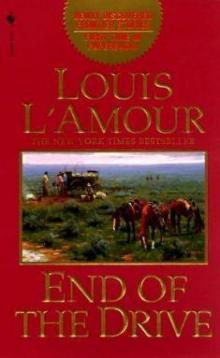 Collection 1997 - End Of The Drive (v5.0)
Collection 1997 - End Of The Drive (v5.0) Fair Blows the Wind
Fair Blows the Wind Talon & Chantry 07 - North To The Rails (v5.0)
Talon & Chantry 07 - North To The Rails (v5.0) The Trail to Crazy Man
The Trail to Crazy Man To the Far Blue Mountains (1976) s-2
To the Far Blue Mountains (1976) s-2 Collection 1981 - Buckskin Run (v5.0)
Collection 1981 - Buckskin Run (v5.0) Collection 2008 - Big Medicine (v5.0)
Collection 2008 - Big Medicine (v5.0) Collection 2003 - From The Listening Hills (v5.0)
Collection 2003 - From The Listening Hills (v5.0)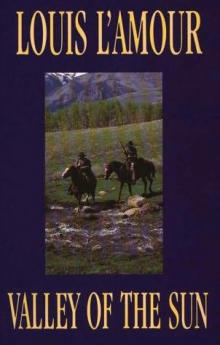 Collection 1995 - Valley Of The Sun (v5.0)
Collection 1995 - Valley Of The Sun (v5.0) Glory Riders
Glory Riders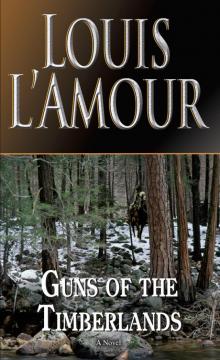 Guns of the Timberlands
Guns of the Timberlands The Collected Short Stories of Louis L'Amour, Volume Four
The Collected Short Stories of Louis L'Amour, Volume Four Novel 1968 - Brionne (v5.0)
Novel 1968 - Brionne (v5.0)